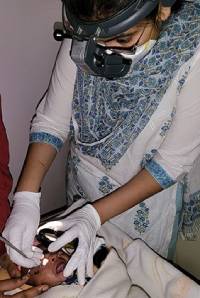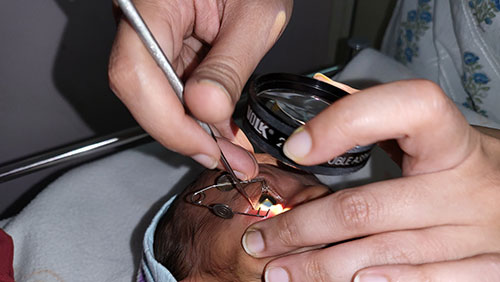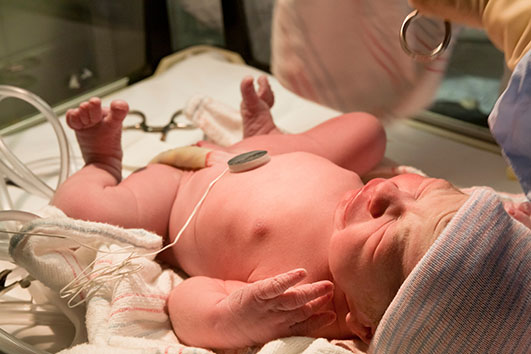

ROP Screening Protocol
| Birth weight < 2000 gms | Gestational age < 34 weeks | Exposed to oxygen for > 30 days |
| Other premature babies (>34 weeks and/or < 2000gms) with any one of the following | ||
| a) Respiratory distress/ Apnoeic episodes/ prolonged o2/cardiovascular support | b) Sepsis | c) Blood transfusions/anemia/ exchange transfusion |
| d) Multiple births | e) Poor post natal weight gain | f) Intraventricular haemorrhage |
- Infants > 1200 grams at birth or > 28 weeks gestational age are screened 3-4 weeks after birth
- Infants < 1200 grams at birth or < 28 weeks GA, screened at 2-3 weeks after birth
- Next date of examination to be decided by the ophthalmologist based on initial findings
- Complete one screening session definitely before ‘Day 30’ of the infant’s life
- Inform us 2 days in advance
- Dilate the child’s eyes with the dilating drops prepared and provided by us .
- Instill single drop of the dilating drops (0.5% Cyclopentolate with 2.5% Phenylephrine in both the eyes three times within the interval of 10 minutes; starting 45minutes prior to the scheduled visit of the doctor
- Keep the baby fasting at least 30 minutes prior to the scheduled time for the screening
- During the screening:
- Keep the screening chart and the inpatient record card ready with the sister in charge
- Switch off the overhead lights
- Provide the pulse-oximeter during the examination and a nurse to assist the examination
-
After the screening:
- Feed the child after 1 hour to prevent vomiting
Intervention may be needed in the form of:
LASER photocoagulation
Anti- VEGF injections
Retinal surgery
Call the child for the follow up examination upto 2 years of age for assessing fixation, squints and refractive errors. Thereafter, based on the pediatric ophthalmologists recommendations.

